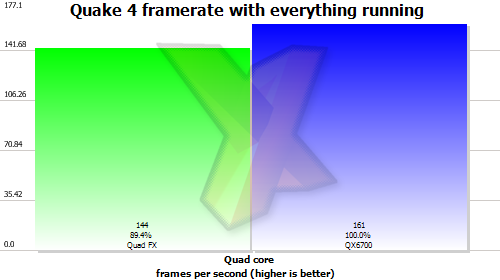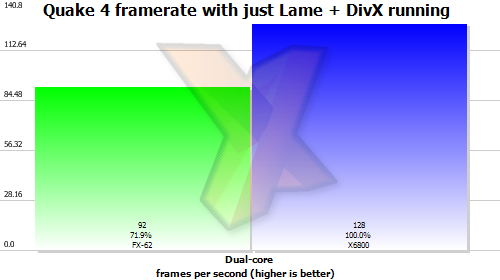Gaming

As we explained earlier in this article, only the quad-core systems could run all four of our applications at the same time. So the results obtained are only directly comparable between these two platforms. It's clear that here too Intel's QX6700 has a distinct lead, achieving a 12 per cent faster frame rate than Quad FX. Subjectively, both systems were slightly jerky at times but distinctly playable with loads of other tasks going on in the background. You could definitely play a standalone game of Quake 4 on either at our test resolution, although the jerks might reduce your networking gaming success. But with any game where your frame rate is marginal, Intel's Core 2 Extreme QX6700 is more likely to be playable than Quad FX.


AMD's Athlon 64 FX-62 falls further behind Intel's Core 2 Extreme X6800 when evaluated with Quake 4 running alongside LAME and DivX encoding. Interestingly, with just POV-ray in the background, the dual-core processors outperform the quad-core ones in our Quake 4 benchmark. The operating system is clearly prioritising the game against POV-ray on these platforms. Even with two other apps vying for time (our Lame audio and DivX video encodes), quad-core will give you better gaming than dual-core. Subjectively, Quake 4 was not very playable at all with other apps running in the background on either dual-core system. The overall frame rate may have been high, but the regular stalls were generally too much even for standalone play.
Overall, then, a win for quad-core but not for Quad FX. If you want to game at the same time as running lots of other tasks in the background, you would be better off with Intel's Core 2 Extreme QX6700. Intel has beaten AMD on its megatasking home turf.









